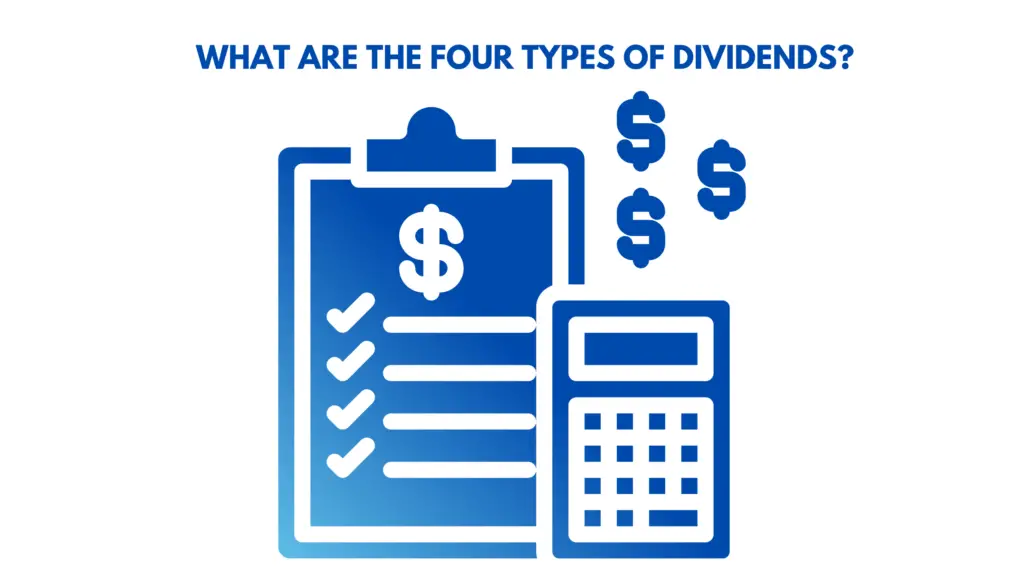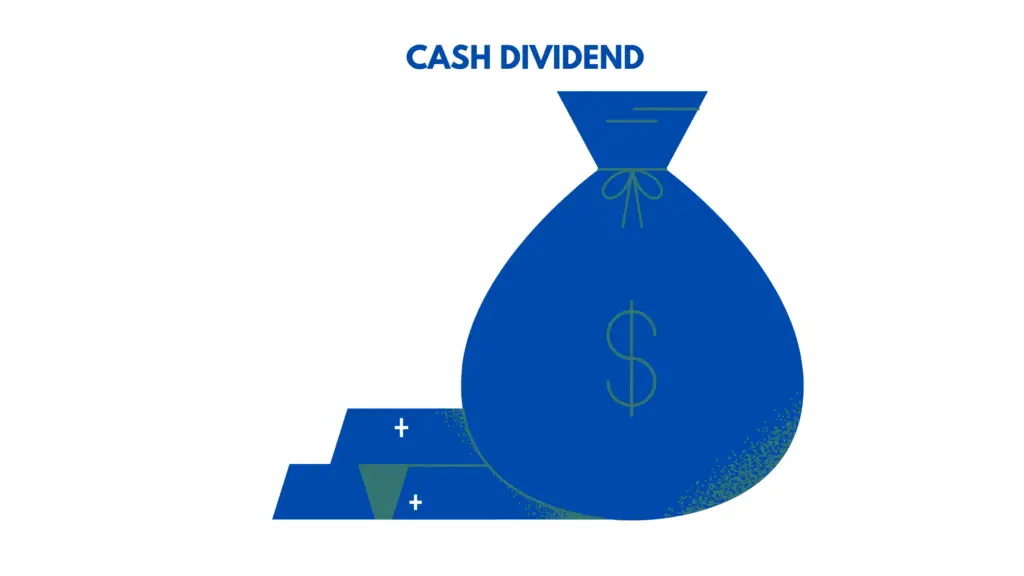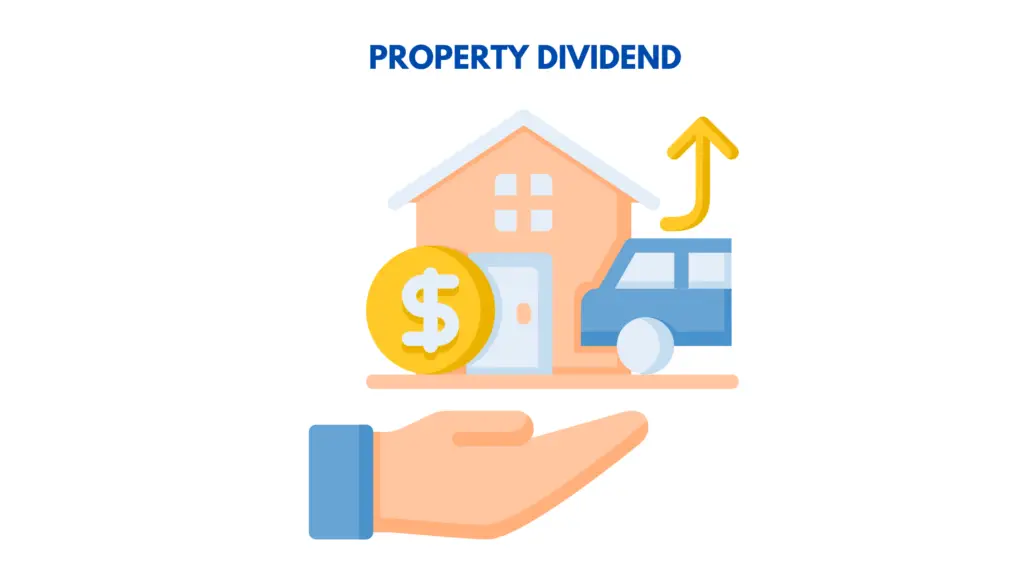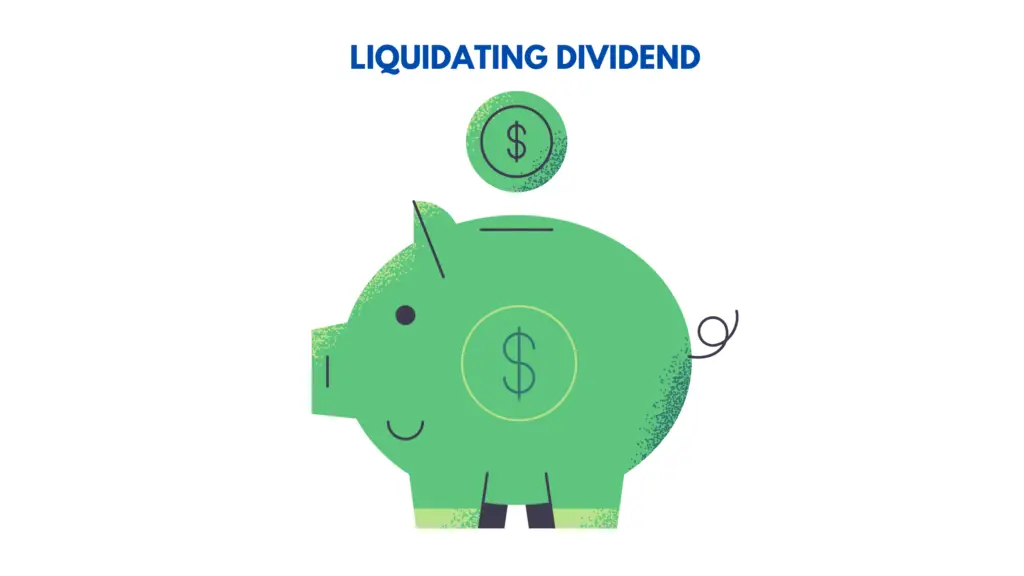It’s normal for investors to expect earnings from their investments. The investments can be in any form like investment in debts, investment in equity, real estate, bitcoin, investment in commodities, etc. It can be in the form of distributing cash or some assets.
The dividend is the return on the investment that investors receive from shares (common share or preferred share that the listed company sells publicly) that they purchased. The dividend is normally declared and distributed annually.
For instance, the return on investment in the stock (dividends) can be paid in multiple forms. Let’s discuss four main types of dividends: cash dividend, stock dividend, property dividend, and liquidating dividend which is commonly known.

1) Cash dividend (A most common type of dividend)
The cash dividend refers to the distribution of the cash to the shareholders as a return on their investment.
The shareholders can also opt to re-invest the dividend and increase the size of their investment. The cash dividend is paid regularly; it may be monthly, quarterly, or yearly based on company decisions.
The dividend-paying companies are usually established with strong cash flow (Dividend-paying companies are considered financially stable per dividend signaling theory).
However, dividend payments may restrict the company’s growth as financing problems may arise due to a shortage of funds.
Further, cash dividends can be paid regularly or on special occasions like some large recovery has been made in the litigation process, some unusual profit has been earned, or there has been excess cash within the company’s financial system.

So, the companies have dividend policies in place and can change the amount of the dividend to be paid from period to period.
Further, the board may decide to recommend a special dividend.


In addition to this, different companies have different policies for dividends. For instance, some companies believe in the capital appreciation of the share price and do not pay a dividend while using retained earnings to expand their operations.
On the other hand, some companies consider dividends as a basic need of the shareholders and make regular payments.
So, an investor must assess the trend of the dividend payment against their need before making a final investment decision.
Accounting treatment for the cash dividend
Once a dividend is announced, the entry is passed into the accounting system that debits retained earnings and credits the dividend payable.
This entry impacts the financial system by an increase in liability and a decrease in reserves. Once the dividend is paid in cash, liability is reversed, and cash is credited from the accounting system.
So, the net impact of the cash dividend payment is the decrease in the cash and the decrease in retained earnings.
A decrease in retained earnings may lead to a barrier to the growth of the company’s business. Hence, the companies need to balance the expectation of the shareholders and the expansion/growth of the business.
2) Stock dividend
The stock dividend is when a company issues additional stock to the shareholders instead of cash.
The company may not have cash resources to pay the dividend or may have some other preference for cash to be invested.
Hence, a stock dividend is paid when a company wants to give a return/reward to its shareholders but does not have the funds to do so.
In other words, not in the form of cash.
Further, the stock dividend has a well-known tax advantage as no tax is payable until the investor sells the shares and realizes the cash.
However, there is one important aspect to understand about stock issuance in the form of a stock dividend.
Once a stock dividend is released, the number of shares increases by a certain percentage.
For instance, if the company rewards a 5% stock dividend, one share will be issued against every 20 shares.
So, an investor with 100 shares will receive five shares, but the market value of the new and old positions of the investor remains the same.
Hence, an increase in the number of shares is a dilution effect, and the real incentive behind the stock dividend is an expectation for the rise in the price of the shares that will lead to a return for the shareholders.
Further, the shareholder doesn’t have to pay transaction costs and commission expenses. This also helps save on the cost as it acts as a form of return for the shareholders receiving a stock dividend.
3) Property Dividend

The property dividend refers to the distribution of the property to the shareholders as a return on their investment.
For property dividends, the company has to assess market value and record the dividend on the fair value.
For instance, the company has purchased property A at the cost of USD25,000, and the current market value of property A is USD100,000.
The company will have to record a gain on investment of USD75,000. Hence, the property’s value will be reflected in the books of the accounts by USD100,000, which will be treated as the actual worth of the property dividend.
After valuation entry, the retained earnings are debited with USD 100,000, and liability is credited with the same amount.
In the last entry, the liability is reversed, and property is derecognized from the books of the accounts as it has been given to shareholders, and the company no longer owns it.
4) Liquidating dividend

The liquidating dividend is when the company is winded up, and the company’s assets are distributed among shareholders by paying in the form of a dividend.
It may be a partial or full liquidation, meaning the company may decide to sell only part or all of the business’s assets.
However, it is important to note that shareholders of the company do not stand first in the line for asset distribution.
First, creditors are paid from the company’s assets, and then the remaining amount is paid to the equity holders.
FAQs
Can the company declare the dividend from unrealized profit?
The company should pay a dividend to the shareholders when the company makes a profit. And it is not normal to pay a dividend when the company makes net losses. In most cases, regulators require the company to have its financial statements audited to confirm the profits are accurate.
Who approves the dividend declaration of the company?
In most jurisdictions, the Board of Directors is the one who approves the dividend declaration of the company when there is an endorsement from the Board of Management or chief executive officer.
In some cases, the company needs to seek approval from the local regulator before it can distribute the dividend.
Can CEO or CFO approve the dividend?
No, it is not normal for the company’s CEO or CFO to approve the company’s dividend declaration. However, if the CEO or CFO sits on the board, they could be the board of members and vote to approve the dividend.
Conclusion
Four types of dividends include cash dividends, stock dividends, property dividends, and liquidating dividends.
The cash dividend is paid in cash, a simple distribution of the funds.
The dividend payment increases the shareholders’ confidence in the business’s financial performance.
However, it restricts the capital growth of the company.
Another well-known type of dividend is the stock dividend. The company distributes additional shares to the shareholders instead of cash.
The third type of dividend is property dividend; in this type of dividend distribution, the Company distributes some property among shareholders as a return on their investment.
However, the property is recorded on the market value in the books of accounts before distribution.
The fourth type of dividend is liquidating, in which the company winds up partial or full operations and pays off assets to the shareholders.
However, the company’s creditors stand first in line in case of liquidation.


